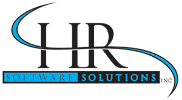Target improving diversity as a means of changing the company culture and bringing in much-needed new faces to the business environment. Although this seems like an issue more suited to face-to-face communication, any company can use HR software to help improve their attempts to diversify their staff and track performance from the first interview onward.
The lack of diversity in tech circles in particular has been a known problem for some time now, even among some of the largest companies in the country. Google drew enormous attention in 2014 when it announced its intent to improve its notably non-diverse employee base.
A chart released soon after by GigaOm used company data to rank some of the biggest business names by their racial diversity. Although almost all of the companies mentioned featured a minor amount of diversity, the overwhelming results showed that Apple, LinkedIn, Ebay and others used a largely Caucasian workforce.
As difficult as it can be to admit a lack of corporate diversity, software solutions can help. A first step to improving representation could be using digital tools to perform research and develop better communication, among other tasks that are easier when a standardized strategy is involved.
In a piece for Fast Company, Catherine Ashcraft of the National Center for Women & Information Technology gives an example of one way to take action for improving diversity: tailoring the job interview.
“Subtle wording in job descriptions can deter highly qualified candidates from applying for jobs,” she said. “Likewise, interview practices do not always identify the qualities that actually make candidates successful, causing companies to miss out on valuable talent. Analyzing your job descriptions and other recruitment strategies can make a significant difference in your candidate pool.”
The HR tools in your enterprise could make diversity a more achievable goal if you use them correctly, and get proper guidance in how to do so.

